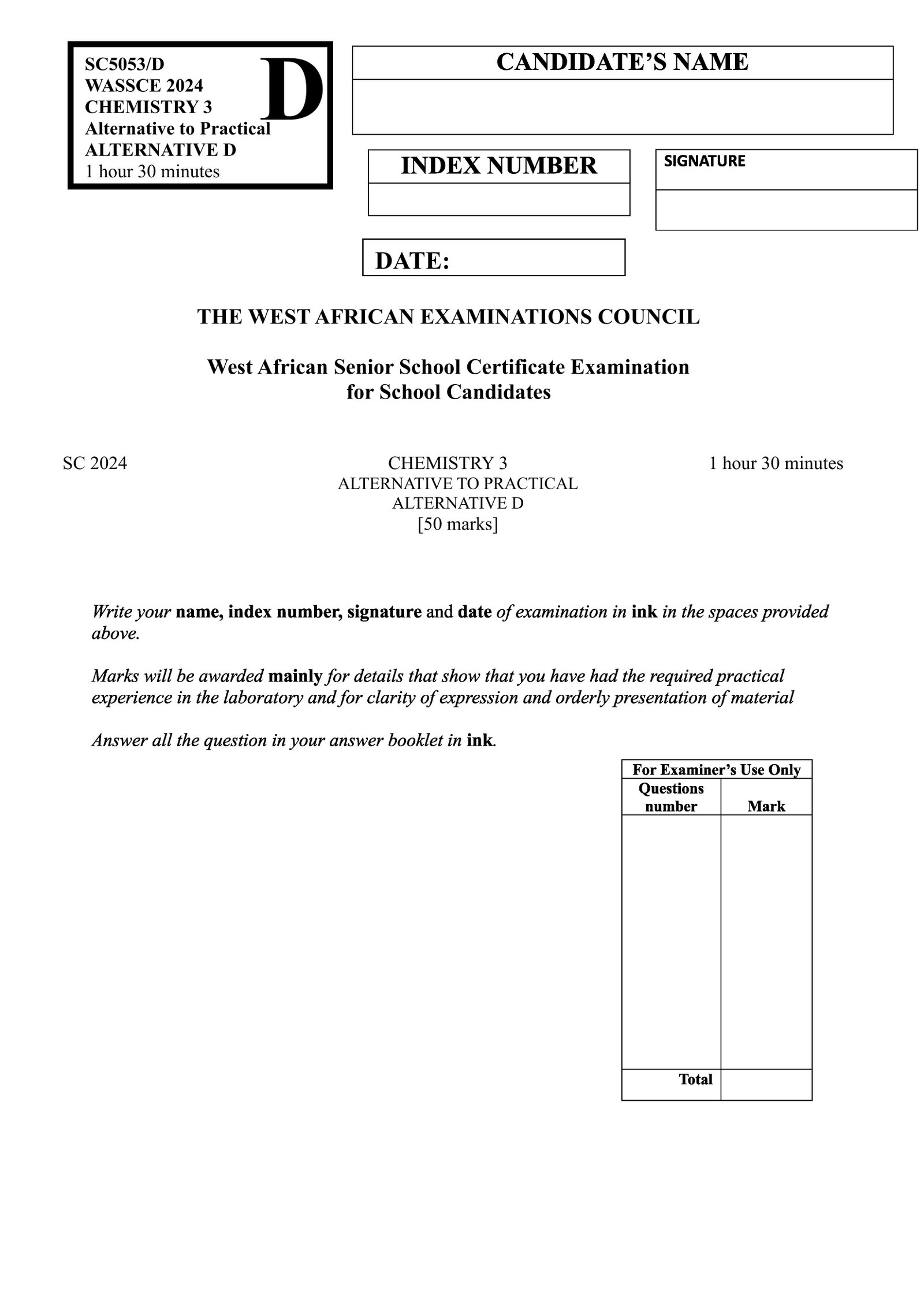

Answer all the questions
A is a solution of a monobasic acid HX, suspected to be HCl or HNO3, containing 3.15g of the acid in 500 cm3 of solution.
B is 0.100 mol·dm−3 NaOH.
25.0 cm3 portions of B were titrated with A using methyl orange as indicator.
The following result was presented by one of the students:
Complete the table below by listing four excretory products of plants and stating one use of each to humans.
Average vol. of A used:
= 24.95 cm3
(a) List three errors in the results recorded by the student.
(b) Using the average titre value of the student:
The reaction equation is:
HX(aq) + NaOH(aq) → NaX(aq) + H2O(l)
[H = 1, N = 14, O = 16, Cl = 35.5, Na = 23]
[20 marks]
(a) Three errors in the results recorded by the student.
(b) Using the average titre value of the student:
Concentration of A in mol·dm−3:
Since HX + NaOH → NaX + H2O,
mole ratio is 1:1,
Therefore, moles of HX = 0.00250 mol
Volume of HX used = 24.85 cm3
= 0.02485 dm3
= 0.1006 mol·dm−3
Molar mass of HX:
Moles in 500 cm3 = 0.1006 × 0.500
= 0.0503 mol
Mass = 3.15 g
= 62.63 g/mol
Identity of HX:
Molar mass of HCl = 36.5 g/mol
Molar mass of HNO3 = 1 + 14 + (16 × 3)
= 63 g/mol
Since 62.63 ≈ 63
HX is HNO3 (Nitric Acid.)
Balanced chemical equation:
HX + NaOH → NaX + H2O
P, Q, R and S are aqueous solutions of ZnCl2, K2CO3, Pb(NO3)2 and H2SO4 but not necessarily in that order.
The results obtained when these solutions were reacted with each other are as shown in the table below:
| P | Q | R | S | |
|---|---|---|---|---|
| P | X | ppt | ppt | ppt |
| Q | ppt | X | No ppt | effervescence |
| R | ppt | No ppt | X | ppt |
| S | ppt | effervescence | ppt | X |
From the results and your knowledge of the solubility of salts in water and the effect of acids on trioxocarbonates, identify, with reasons, each of the solutions.
[16 marks]
Identification and Reasoning:
Final Identifications:
| Label | Identified Solution | Chemical Formula |
|---|---|---|
| P | Lead(II) nitrate | Pb(NO3)2 |
| Q | Potassium carbonate | K2CO3 |
| R | Zinc chloride | ZnCl2 |
| S | Sulfuric acid | H2SO4 |
(a) Describe one chemical test to distinguish between aqueous solutions of:
(b) Explain why the molar heat of neutralization of a strong base by a strong acid is constant.
(c) Name two gases that are soluble in water.
[14 marks]
(i) Calcium trioxonitrate(V) vs. Zinc trioxonitrate(V):
Test: Add aqueous sodium hydroxide (NaOH) dropwise, then in excess.
(ii) Potassium chloride vs. Potassium trioxocarbonate(IV):
Test: Add dilute hydrochloric acid (HCl).
It is constant (≈ –57 kJ/mol) because strong acids and bases completely ionize in water.
The net reaction is:
H+ (aq) + OH- (aq) → H2O (l).
This reaction is the same in all strong acid–strong base reactions, so the heat change is always the same.